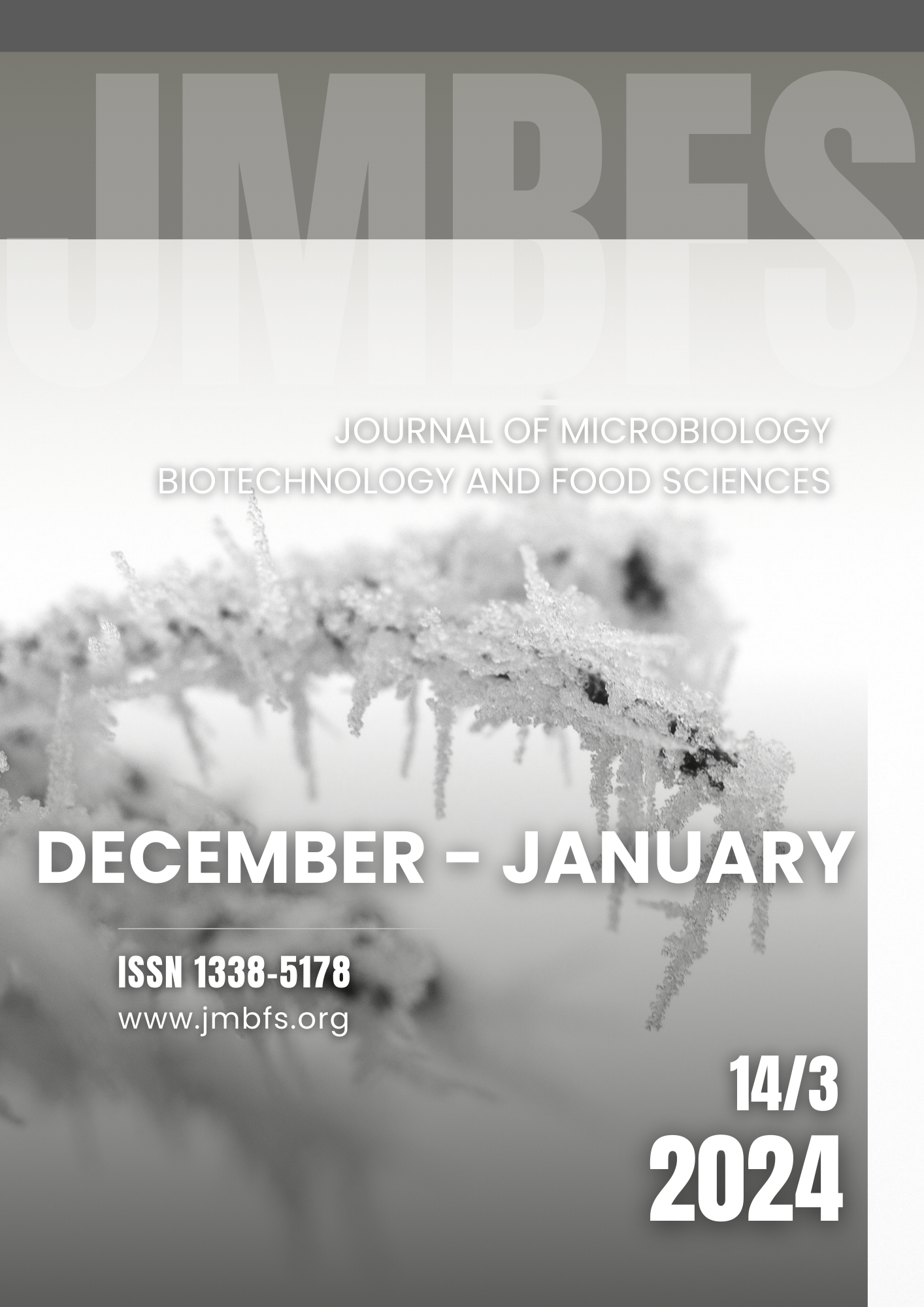PREPARATION, CHARACTERIZATION, AND ANTIBACTERIAL ACTIVITY OF NEWLY BIOSYNTHESIZED AMPICILLIN/CHITOSAN/SELENIUM NANOCOMPOSITE (AMP/CS/SENC) USING FUSARIUM FUJIKUROI PP794203 AGAINST MULTIDRUG-RESISTANT ESCHERICHIA COLI PP797596
DOI:
https://doi.org/10.55251/jmbfs.11608Keywords:
Selenium, nanocomposite, biosynthesis, antibacterial activity, Fusarium fujikuroi, Escherichia coli, bacterial resistanceAbstract
Nowadays, nanobiotechnology is being used to restrict the development of bacterial resistance, particularly multidrug-resistant strains. Applications for selenium nanoparticles (Se NPs) are becoming progressively more widespread due to their broad bioactivity and antibacterial action, although few studies report their use as nanoparticles (NPs) in combination with antibiotics. The present study evaluated the combined effects of ampicillin (AMP), chitosan (CS) and Se NPs (AMP/CS/SeNC) against the multidrug-resistant Escherichia coli PP797596. Se NPs were biosynthesized using Fusarium fujikuroi (PP794203) in a green, safe, and fast method. AMP/CS/SeNC was characterized by UV-Vis spectroscopy, Fourier-transform infrared (FTIR) spectroscopy, X-ray diffraction (XRD), Zeta potential, and transmission electron microscope (TEM) analyses. AMP/CS/SeNC revealed a characteristic peak at 280 nm. FTIR confirmed the presence of proteins as stabilizing and capping agents. Zeta potential refers to the high stability of AMP/CS/SeNC due to an intensive positive net surface charge (+44.3 mV). AMP/CS/SeNC appeared as crystalline-shaped NPs with an average particle size of 85.32 ± 1.8 nm. AMP/CS/SeNC showed strong antibacterial activity against the tested E. coli and displayed an inhibition zone of 21 ± 0.06 mm and a significantly minimum inhibitory concentration of 25 µg/ml. In addition, the prepared nanocomposite completely destroyed the tested E. coli cells, including the cytoplasmic membrane and cell wall, according to TEM studies. The current study provides a new nanocomposite that might be applied to different pharmaceutical products and an exceptional antibacterial potential against multidrug-resistant bacteria.
Downloads
Downloads
Published
How to Cite
Issue
Section
License
Copyright (c) 2023 Mayada F. El-Fawal, Amira A. El-Fallal, Mohamed I. Abou-Dobara, Ahmed K.A. El-Sayed, Mohamed M. El-Zahed

This work is licensed under a Creative Commons Attribution 4.0 International License.
All papers published in the Journal of Microbiology, Biotechnology and Food Sciences are published under a CC-BY licence (CC-BY 4.0). Published materials can be shared (copy and redistribute the material in any medium or format) and adapted (remix, transform, and build upon the material for any purpose, even commercially) with specifying the author(s).





